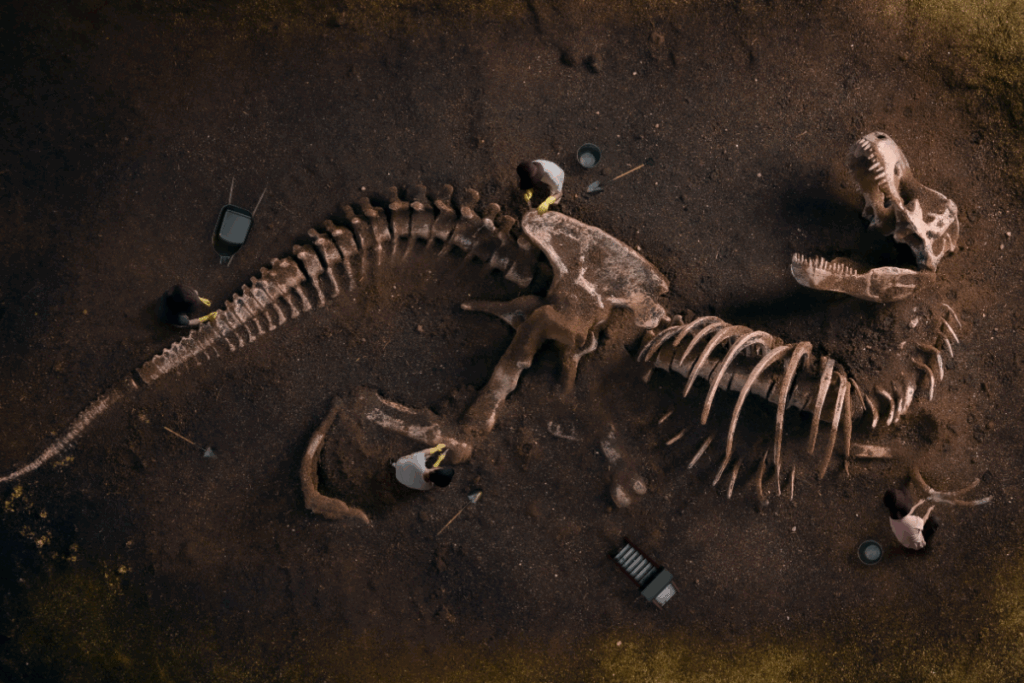A Once-In-A-Lifetime Fossil Find
Over a century after their discovery, two duck-billed dinosaur fossils unearthed in Wyoming have revealed a stunning surprise: their skin, spikes, and even hooves remain intact. The remains of the species Edmontosaurus annectens, which roamed North America more than 66 million years ago during the late Cretaceous period, are now being hailed as among the best-preserved dinosaur fossils ever found.
The fossils were originally discovered in 1908 in a ravine in east-central Wyoming. At the time, paleontologists believed they were examining ordinary skeletal remains with faint traces of skin texture. But new research from the University of Chicago has dramatically altered that understanding. According to a study published in Science, the dinosaurs are actually “mummified” specimens encased in a thin layer of clay that preserved their soft tissues in remarkable detail.
Flesh, Spikes, and Hooves Intact
Using advanced imaging and chemical testing, researchers determined that the fossils still contain remnants of flesh, a ridge of spikes running along the back and tail, and hoof-like coverings on the toes. This level of preservation is extraordinarily rare. Typically, soft tissue decays rapidly after death, leaving only bones behind.
The study’s authors described the discovery as “stunningly preserved,” adding that the two Edmontosaurus fossils offer the most complete external view of a large dinosaur ever recorded. “We’re seeing the full profile of the dinosaur for the first time,” said Paul Sereno, the University of Chicago paleontologist who led the project. “We’re confident in what it looked like.”
The research revealed that the mummified surfaces formed when the carcasses were buried and covered in clay during the early stages of decay. That layer acted as a natural mold, preserving the shape of the animals’ skin and other external features before the organic material disappeared entirely.
How the Dinosaurs Were Preserved
Scientists were particularly surprised to find this kind of preservation in a terrestrial setting. Typically, such fossils form underwater in oxygen-free environments that slow decomposition. In this case, the team concluded that the clay sediment around the carcasses created a similar low-oxygen microenvironment, halting decay long enough for the skin and soft tissues to imprint before fossilization occurred.
One of the two specimens — a late juvenile around 20 feet long — is the first known subadult dinosaur mummy on record and the first large-bodied dinosaur showing a fleshy ridge along its trunk. The second, a 40-foot adult, is the first hadrosaurid to preserve a full row of spikes from the hips to the tail tip, as well as the first reptile known to show wedge-shaped hooves.
“These specimens redefine what we thought possible for fossil preservation,” Sereno said. “It’s as close as we’ve come to seeing what these animals really looked like in life.”
A New Look at Prehistoric Life
The discovery gives scientists an unprecedented opportunity to study the external anatomy of Edmontosaurus annectens, a species that once dominated the floodplains of ancient North America. With its duck-shaped bill, plant-eating diet, and massive body, the hadrosaur has long been one of the most recognizable dinosaurs, but much about its skin and texture had remained speculative — until now.
Researchers say the Wyoming mummies could help refine reconstructions of not only Edmontosaurus but other large herbivorous dinosaurs from the same period. The fossils are currently being further analyzed using microscopic and spectroscopic techniques to identify any remaining organic compounds.
More than a century after their excavation, these “dinosaur mummies” are rewriting the story of fossil preservation and offering a rare, tangible glimpse into a lost prehistoric world.



